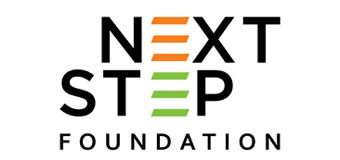Can Artificial Intelligence Improve Assistive Technologies for Persons with Disabilities?
Across Organization for Economic Co-operation and Development (OECD) countries, Persons with Disabilities are 2.3 times more likely to be unemployed than people without disability. Among the many factors that contribute to this disparity is the lack of assistive technologies. (In East Africa, where Next Step Foundation works, the situation is even worse — the unemployment rate for Persons with Disabilities is even higher, and the lack of access to assistive technologies is more pronounced.). With all of the hype surrounding artificial intelligence (AI), could AI help narrow this gap and increase the percentage of Persons with Disabilities in the workforce? Using AI to Support People with Disability in the Labour Market, a recent report by the OECD attempts to answer this question.
The report classifies AI-enabled assistive technologies into four groups:
• Disability-centered solutions — examples include “live captioning algorithms for individuals who are deaf or hard-of-hearing; image recognition solutions allowing blind or low-vision individuals to hear descriptions of the world around them; self-driving wheelchairs using computer vision to move autonomously; speech-to-text solutions for people with dysarthric(*) speech or for people who cannot type on a keyboard; or, more generally, AI-powered accessible interfaces using face, gaze or lip movements, or even brain signals, to control devices.”
• Environment adaptation solutions — “these solutions allow content and workplaces to be made accessible rather than expecting persons with disabilities to adapt.” Examples include “text simplification algorithms that make texts accessible to neurodiverse individuals, or algorithms automatically suggesting alternative text (‘alt text’ (*)) to describe pictures. … [and] AI power[ed] indoor positioning systems to make buildings accessible to blind and low-vision individuals.”
• Solutions improving accessibility at a meta-level — in which “AI helps improve accessibility indirectly by facilitating or enhancing processes that themselves improve accessibility.” For example, “AI can help improve the efficiency of the workplace accommodation process. … Recommendation algorithms can match employees with assistive technology solutions based on their self-declared ability profiles, historical data on workplace adaptation, and user feedback data on the solutions themselves.”
• Solutions unlocking new work opportunities for people with disability — “where new job opportunities in the field of AI are created specifically for people with disability…” Examples of this include data labelling companies that recruit neurodiverse individuals who might have an enhanced capacity to focus and hence be particularly well-suited for the job or an AI-powered remote operation technology that can make jobs such as forklift operator accessible to people with physical disabilities.

It won’t surprise anyone who reads this Substack that I am focused on the lack of data as a cause of the lack of assistive technology.
“Difficulty in accessing data also features prominently in innovators’ list of obstacles. Indeed, as explained by Jean-Marie Favreau, data are “the key ingredient” for AI: without it, “it’s really difficult to come up with something that’s relevant”. Data collection is complicated by the existence of a “chicken and egg” problem, namely: investments in data collection are dependent on the demonstration of their usefulness in concrete solutions, but data are necessary to develop these solutions and establish proofs of concept in the first place.”
The report identifies two types of actors who may be able to collect the relevant data: public-sector actors, academics and researchers who can collect data for the public good outside of commercial constraints and for-profit firms that can afford to buy data before it is proven useful. Critically, however, “For independent start-ups … the cost associated with access to correctly annotated data can be high and represent a very tangible barrier to entry.” (emphasis mine). That is, without open-sourced training data that is disability inclusive, AT start-ups will struggle mightily.
Similarly, building AT by using “mainstream AI applications bears the risk of propagating built-in ableist biases and discriminating against people with disability. … [because] people with disability are excluded from the training datasets of mainstream AI tools.” (emphasis mine). In other words, an AT start-up probably can’t use a mainstream AI application right out of the box as a foundation model without much risk of bias.
Even if people with disabilities are included in the training datasets, there is still a risk that “Algorithmic bias against people with disability might also manifest if the training data reflect embedded ableist biases that are being scaled and magnified through AI.” (emphasis added). In other words, it is not just whether a training dataset does or does not have images of people with disabilities but how those people with disabilities are depicted in those images.
- Statistics from Using AI to Support People with Disability in the Labour Market. OECD countries include
- Austria
- Belgium
- Canada
- Denmark
- France
- West Germany
- Greece
- Iceland
- Ireland
- Italy
- Luxembourg
- Netherlands
- Norway
- Portugal
- Spain
- Sweden
- Switzerland
- Turkey
- United Kingdom
- United States
- There are a number of definitions for “assistive technology.” From Wikipedia,
“Assistive technology (AT) is a term for assistive, adaptive, and rehabilitative devices for people with disabilities and the elderly. Disabled people often have difficulty performing activities of daily living (ADLs) independently or even with assistance. ADLs are self-care activities that include toileting, mobility (ambulation), eating, bathing, dressing, grooming, and personal device care. Assistive technology can ameliorate the effects of disabilities that limit the ability to perform ADLs. Assistive technology promotes greater independence by enabling people to perform tasks they were formerly unable to accomplish or had great difficulty accomplishing by providing enhancements to or changing methods of interacting with the technology needed to accomplish such tasks.
For example, wheelchairs provide independent mobility for those who cannot walk, while assistive eating devices can enable people who cannot feed themselves to do so. Due to assistive technology, disabled people have an opportunity of a more positive and easygoing lifestyle, with an increase in “social participation”, “security and control” and a greater chance to “reduce institutional costs without significantly increasing household expenses.”[1] In schools, assistive technology can be critical in allowing students with disabilities to access the general education curriculum. Students who experience challenges writing or keyboarding, for example, can use voice recognition software instead. Assistive technologies assist people who are recovering from strokes and people who have sustained injuries that affect their daily tasks.”
- Internal citations omitted.
About the Author
Dr. Christopher Harrison, our Executive Chairman, is a renowned copyright, technology, and antitrust expert. He has leveraged his expertise to drive social impact through the Next Step Foundation (www.nextstepfdn.org).



















